Read on as we share some low-carb (or even zero-carb) keto-friendly substitutes for some of your usual and favorite eats.
Keto Alternatives for Low-Carb Rice
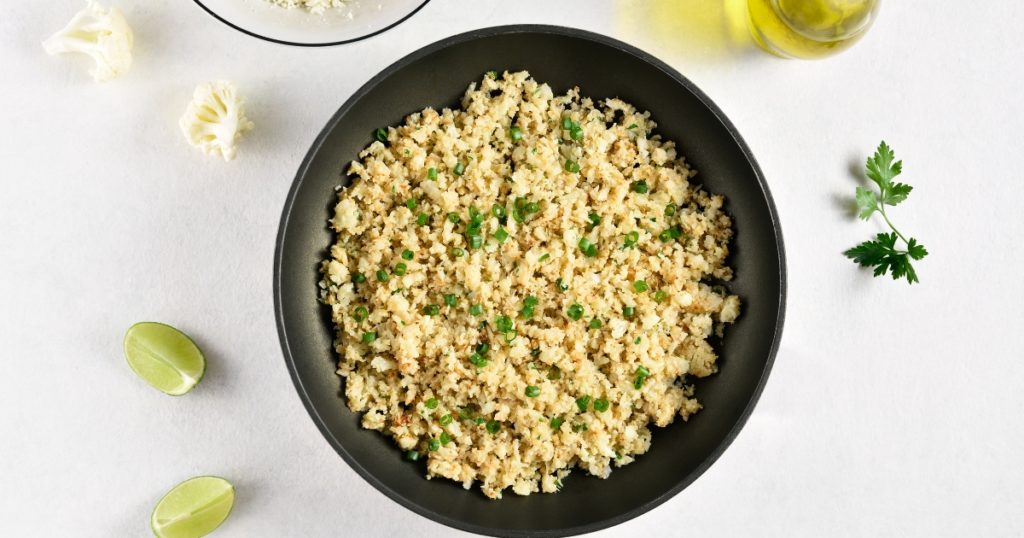
For us Filipinos, rice is life. Hey, we even have various desserts that are basically rice, right? That’s how rice-obsessed we are.
Sadly, rice is not keto-friendly–one cup alone would kick you out of ketosis. But you don’t have to say goodbye to rice, especially if it’s your staple for your meals. Check out some of these keto rice substitutes.
- Broccoli or Cauliflower Rice: Cauliflower and broccoli are both versatile vegetables that can be used in many keto recipes, including as a substitute for rice. Simply chop your chosen vegetable into small pieces and pulse in a food processor until it reaches a rice-like consistency. If you don’t have a food processor, use a grater or chop up the veggie until you get rice-sized pieces. Cook it up in a pan and serve as your keto diet substitute for rice.
- Cabbage Rice: Cabbage is another vegetable option for a rice alternative. It’s low in carbs and easy to prepare. Just shred the cabbage using a knife, a grater, or a chopper. Its slightly sweet flavor goes well with savory food like eggs and meats.
- Shirataki or Konjac Rice: Shirataki and Konjac are both high-fiber, low-carb and very low-calorie rice substitutes. They’re chewy and neutral in flavor, meaning they pair well with any kind of food. You can buy these online; you might see stores selling shirataki noodles, which means you can also have low-carb and low-calorie ramen and other noodle dishes.
It might take some time to get used to these, but we promise: you’ll get to the point of enjoying them.
Keto Substitutes for Bread
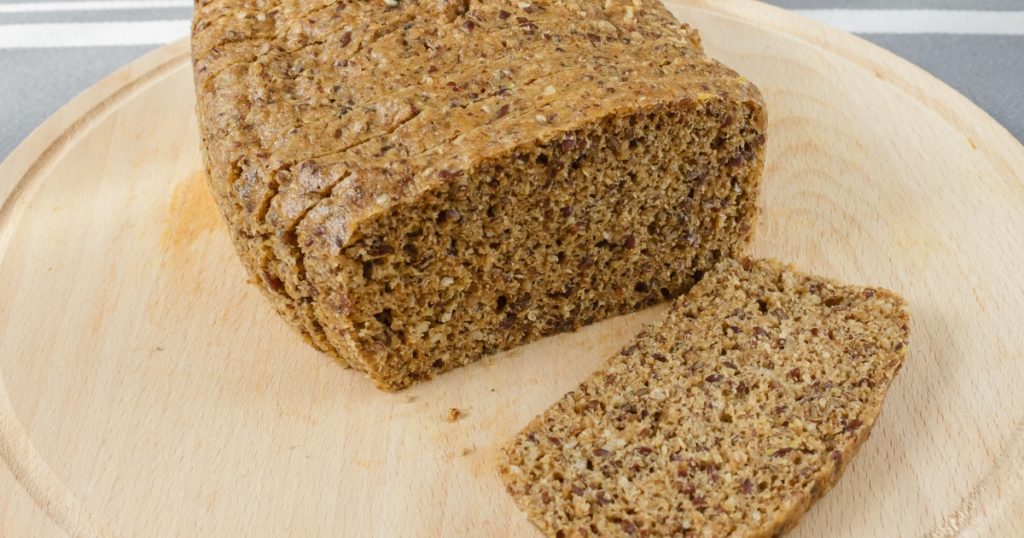
If rice is life for Filipinos, bread comes as a close second. After all, we have plenty of favorites in Pinoy bakeries and various spreads to enhance our enjoyment. Sadly, since the usual white bread has a high carbohydrate content, it’s another food you have to avoid.
Good thing there’s keto bread–as in keto substitutes for flour bread, such as:
- Coconut Flour Bread: Coconut flour is a low-carb alternative to wheat flour and can be used to make keto-friendly bread. You’ll get bread high in fiber and protein and a natural sweet taste.
- Almond Flour Bread: Almond flour is another low-carb flour that can be used to make keto-friendly bread. Your bread will have a slightly nutty flavor and a dense texture.
- Cloud Bread: Cloud bread went viral because of TikTok. But what is cloud bread, exactly? Well, it’s a light and fluffy bread alternative made from eggs, cream cheese, and cream of tartar. It’s another great low-carb option!
And if you’re looking for exact recipes on how to make keto bread, look no further than our class here at The Bailiwick Academy: Keto Bread The Gluten Free Series! You’ll get to make four kinds of keto bread: Keto Dinner Rolls, Keto Loaf Bread, Keto Burger and Hotdog Buns, and Keto Pan de Sal.
You definitely won’t have to say goodbye to bread!
Keto Substitutes for Various Desserts

Just because you have to do keto doesn’t mean dessert is off-limits for you. There are plenty of low-carb alternatives for desserts, such as:
- Keto Ice Cream: No need to look for a keto substitute for ice cream, as there are already plenty of keto ice cream brands in the market. They come in various flavors, and plenty taste like the real thing. You can even make your own–enroll in our Keto Ice Cream class to get started.
- Keto Cakes: If you need to satisfy your sweet tooth, rejoice, as keto cakes are now included in low-carb foods that are on the market. You no longer have to worry about them being high in sugar and carbs since these cakes are made with keto substitutes that are friendly to your diet. For example, they use almond or coconut flour instead of cake makers using wheat flour. And just like with ice cream, you can get started making Keto Cakes here at The Bailiwick Academy. Choose from Keto Cakes, Keto Cheesecakes, or Keto Cakes 2, and come up with plenty of guilt-free delicious cakes!
You can also indulge in donuts, muffins, brownies (available in our Keto Easy-Bake Bestsellers), and even various Filipino favorites like bibingka and puto bumbong.
Do take note that even though these keto desserts are lower in net carbs than their traditional counterparts, these keto alternatives should still be eaten in moderation since they are generally high in calories and fat. Practice enjoying them as occasional treats.
Zero Carb Drinks

If you like drinking Coke, Pepsi, and any other carbonated drinks, you should be aware by now of their high sugar content. But you don’t have to look far for keto alternatives to soda. You don’t have to get rid of soda entirely, either.
Coke Zero, Coke Light, Sprite Zero, and Pepsi Max are all keto-friendly. They’re zero calories too! The same goes for plenty of other drinks in the market, like Rite N’ Lite.
Of course, make sure to check with your personal doctor how much of these you can safely consume in a day.
Keto Substitutes for Snacks
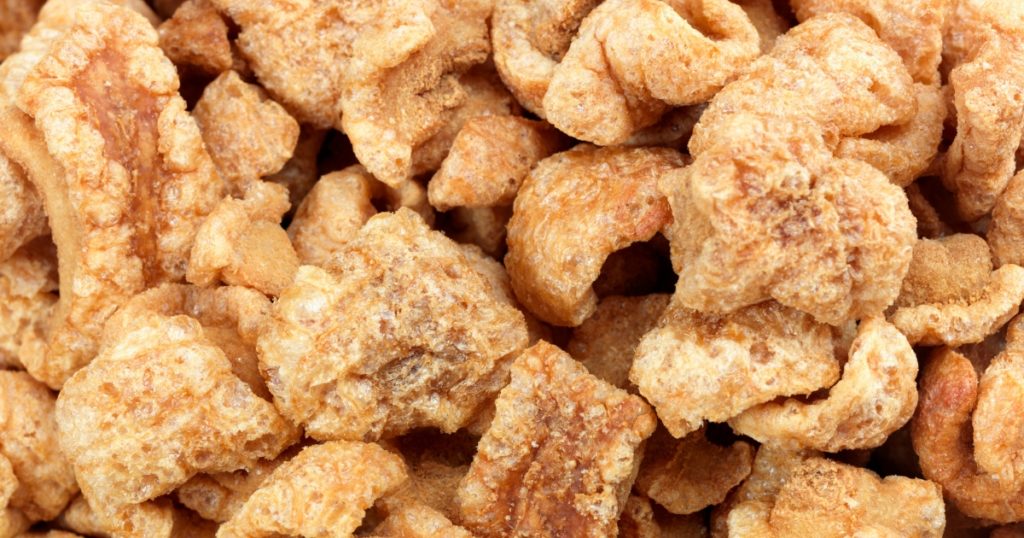
Like eating fries, potato chips, and other salty snacks? We can’t blame you–they’re delicious and can be quite comforting, especially if you’ve had a very long day. The carb count for these, though, is a different story.
You don’t have to stop snacking though–just exchange your usual high-carb foods with low-carb ones. For example, instead of eating chips, eat chicharon or pork rinds instead. They’re also crunchy and salty, but most importantly, they carry a zero carb count.
You can also eat nuts and seeds instead. You’ll have to read the label and/or do research, but plenty of them have low net carbs. Just be sure to limit your intake to follow your daily carb limit.
One more you can do is use zucchini as a potato substitute. Zucchini has lower carbs and calories compared to potatoes, so you can make zucchini chips or zucchini fries instead. When sliced thinly and baked or fried, zucchini can have a crunchy texture that is similar to potato chips or fries.
Don’t know it until you’ve tried it!
Keto-Friendly Sweeteners

Pinoys use sugar in everything, especially for our morning coffee. But as we already know, sugar is not allowed in keto diets. Use the following substitutes instead:
- Stevia: Stevia is a natural sweetener that is derived from the stevia plant. It has no calories, and some describe it as much sweeter than regular sugar. Stevia is the most-talked-about keto substitute for sugar because it doesn’t impact the levels of different people’s blood sugars.
- Erythritol: Erythritol is a sugar alcohol that is commonly used as a sugar substitute in the keto diet. It has only 0.2 calories per gram and also does not have an impact on blood sugar levels. However, according to Healthline, consuming too much of it may cause digestive issues, including nausea.
- Monk Fruit: Monk fruit is a natural sweetener that is derived from the monk fruit plant. It also has no calories and can be much sweeter than the usual sugar. It does not have an impact on blood sugar levels. You’re more likely to find monk fruit in online stores here than in groceries.
- Sucralose: Sucralose is a no-calorie sweetener that is made by modifying regular sugar molecules to create a new compound that the body does not recognize as sugar. While sucralose is generally considered safe to consume in moderation, some believe that consuming artificial sweeteners like sucralose can cause an insulin response. Research on this topic is mixed and has no official conclusion yet.
Will artificial sweeteners stop ketosis? Some people seem to think so, but there’s no evidence suggesting that keto sugar substitutes will affect ketosis. So until there’s actual evidence, keep on using it.
Keto Substitutes for Pasta
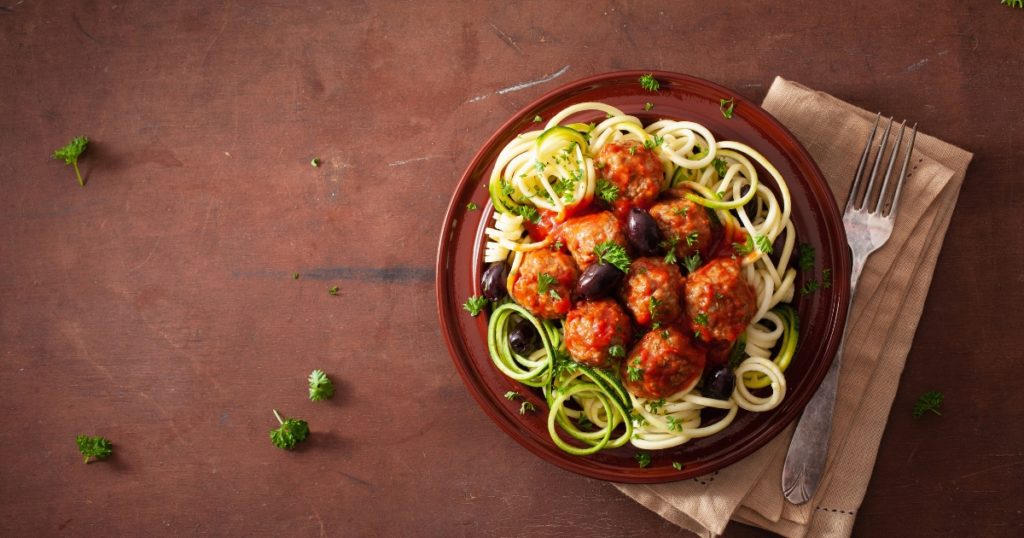
Pasta noodles are again, high in carbohydrates. After all, traditional pasta noodles are made from wheat flour which has 76g of carbs for every 100g. However, you can choose from any keto alternative to pasta that can be used to recreate keto-friendly pasta meals, such as:
- Zucchini Noodles (Zoodles) – Zucchini noodles are made by spiralizing zucchini into thin, noodle-like strips. They have a similar texture to pasta, making this one of the most popular keto diet replacements for pasta.
- Spaghetti Squash – Spaghetti squash is a type of winter squash that can be roasted and shredded to create a pasta-like texture.
- Shirataki Noodles – We’ve mentioned these before, but instead of in rice form, they’re now in noodle form. Like zucchini noodles, they have quite a similar texture to pasta.
Final Thoughts
As you can see, just because you’re on a keto diet, it doesn’t mean you have to give up your favorite foods altogether. There are plenty of delicious and satisfying keto-friendly alternatives out there that can help you stay on track while still enjoying the flavors you love. We hope this list gives you a headstart on looking for those keto substitutes.
In the meantime, we wish you all the best as you go on your keto diet. Here’s to a better and healthier you!
Speaking of Keto Pasta…
If you’re interested in making your own keto pasta–and achieving it in the fastest and best time possible, then you’re in luck. The Bailiwick Academy has a new course by Ms. Chiqui Dingong: Keto Pasta!
Check out the video below to learn more about our latest class:
When you enroll in Keto Pasta, you’ll learn to make low-carb and sugar-free pasta dishes that are just as delicious as the real deal. Not only will you learn to make three kinds of pasta (fettuccine, lasagne, and spaghetti), but you’ll also get recipes for three pasta sauces: Truffle Mushroom Cream Sauce, Ragu ala Bolognese, and Pesto ala Genovese.
And guess what? You’ll be making REAL pasta noodles! No substitutes like shirataki–but you’ll have to enroll in this course to find out how Ms. Chiqui does it!
Satisfy that pasta craving with these delectable pasta dishes without the guilt–and appeal to customers who are looking for keto alternatives, too! Sign up at The Bailiwick Academy today to get started!
Oh, and if you’re reading this now (May 15, 2023, Philippine Time), this new course is on sale until 8:30 PM today! Make sure to grab it before the sale expires!
—
Keep coming back to The Bailiwick Academy blog for more kitchen tips, tricks, and much more!
]]>Well, if you’re into diving deep into food history as much as we are, you’ll enjoy this article! Check out this list of five popular food dishes and their origins. As the title says, you may be surprised at the unexpected sources.
(And if you happen to run into a food and their origins quiz in the future, at least you’ll know the answers to some questions! LOL.)
Food origins: Pasta

From how we mentioned this food in our intro, you know it’s going to have surprising origins already.
While we may automatically think of Italy when we start talking about pasta and pasta noodles, pasta history says otherwise. Pasta actually descends from China, which makes sense with all the noodles being eaten over there. The overall general belief is that the recipe for egg noodles got imported from China into Italy all thanks to the adventurer Marco Polo.
However, what is truly Italian about pasta is the Italians’ use of durum wheat. It made pasta noodles more affordable, versatile and also granted a long shelf life when noodles are dried. So if you really want to, you can technically say that pasta is still an Italian invention.
There are now many versions of pasta nowadays, like fast food spaghetti. But if you want to make a “pasta” that is truly Pinoy, you can check out our Classic Pinoy Favorites class with Chef Chona. You’ll be able to make an Espesyal na Pancit Palabok!
Croissant’s food origin is…

And if you guess it by now, yes, the French didn’t invent the croissants (although croissant is a French word, meaning “crescent”). The croissant’s first descendant is the Vienna, Austria treat known as kipfel or kipferl. It’s also a crescent-shaped bread that is served nowadays as a cookie.
The invention of the croissant that we know nowadays is attributed to August Zang, an Austrian artillery officer. He opened Boulangerie Viennoise in Paris back in the 1830s. The Parisians fell for the bread, and French bakers eventually made their own methods of doing this particular bread. Thus, the flaky French croissants we all know and love was born!
Want to make your own croissants? It’s easy! Just enroll in our Laminated Dough class with Chef Jimbo!
Where did sushi come from?
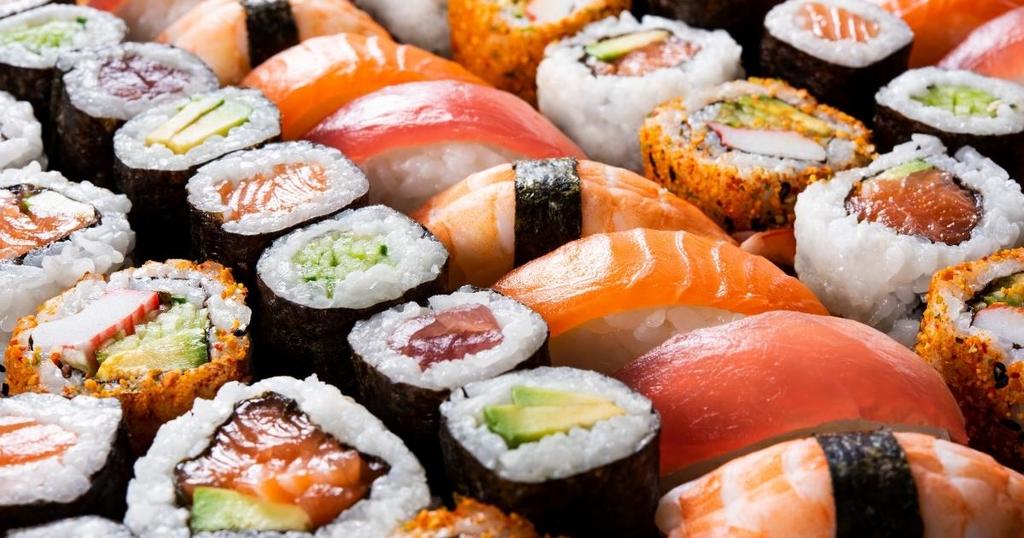
Here’s another of the popular foods associated with one country but originated elsewhere. Sushi is associated with Japan, but you can trace its origins back to China. It’s surprising food news, but it’s true!
According to Roka Akor, sushi was first called narezushi. It was simply fermented rice and salted fish. You didn’t even eat the rice with the fish before – it was only used to wrap and preserve the fish! Hard to think about, huh?
The narezushi spread to Japan in the 8th century, where its popularity bloomed, and got called sushi by the Japanese. Apparently, in 1852, there were one to two sushi restaurants for every 100×100 meter square block! So the Japanese are still responsible for popularizing sushi. We have to give them that.
If you love sushi as much as we do, it’s worth trying out our class with Chef Allan Mertola: Modern Sushi and Maki!
Food origins: Doughnuts

Thanks to pop culture, we usually associate these treats with a hole in the middle with the US of A. You know, cops with doughnuts, that sort of thing.
That’s why we were surprised that when it came to doughnuts, there were plenty of food origin stories!
For example, according to Britannica, there were already records dating back to the mid-19th century of the Dutch making them. They were called “olykoeks” or oily cakes, balls of cake fried in pork fat. The center of the cake wouldn’t cook as fast as the outside, so these pastries got stuffed with fruits or nuts, treats that didn’t need to be cooked.
Here’s another origin story. Elizabeth Gregory, a New England ship captain’s mother, was preparing deep-fried dough for the boat’s crew. Apparently, she was the one who thought of stuffing the dough with nuts. Also, she was the one who referred to the treats as “doughnuts.”
But according to her son, Hanson Gregory, he was the one who innovated the hole in the middle, in 1847. He wanted to remove the raw insides, so he punched a hole through the center with his ship’s tin pepper box. The hole made the doughnut able to be cooked evenly.
One final story is that Greece is where the doughnut really comes from. Over there, they’re known as Loukoumades: small doughnut balls covered in honey and walnuts. They’re also considered to be the oldest recorded dessert, dating back to the very first Olympic Games in 776 BC. The Loukoumades are presented to the winners as honey tokens.
A very popular food comes with three origin stories. Isn’t it amazing?
If you want to start your own doughnut origin story (or simply just make doughnuts), enroll in Chef Joey Prats’ Divine Doughnuts class!
Food origin of the Apple pie

There’s a saying: “As American as apple pie.” It means that whatever you are referring to with that saying is very American. But the ironic thing about this particular saying is that neither apples nor apple pies originated in North America. Oops.
For one thing, Apples are native to Central Asia. As for the apple pie itself? Well, apples weren’t the first thing that the English put in their pies. In medieval England, they put meat, and called a pie a “pye”.
The first apple pie was recorded in 1381 and was a far cry from the apple pie we know of today. Think of an apple pie, but mixed with figs, saffron, raisins, and pears.
We can argue that the Americans have perfected the apple pie. After all, they have made it one of their unofficial symbols.
And if you want to experience true apple pie perfection, enroll in our Fabulous Pies class with Chef Joey!
Final Thoughts
And those are five popular food items and their origins. Did any of them surprise you? Which delicious eats would you like to learn more about? Let us know in the comments!
Before you go, don’t forget to sign up at The Bailiwick Academy so you can learn to make some of the food on this list. You won’t regret it!
Also, keep coming back to The Bailiwick Academy blog for more informative articles about food, baking, cooking, business, and so much more!
]]>But despite how common pasta is in our (and our mothers’) pantries, there are actually many different kinds! There are definitely more than 10 different kinds of pasta noodles. We were definitely surprised to know that! Our latest class offering (more on that later) piqued our curiosity about the different pasta noodles available. So we did some research on different types of pasta and noodles found in local groceries and served at restaurants. And if you guessed noodles=different kinds, you guessed right! So the next thing we did was make this list.
Why make a list of all different types of noodles, you ask? Well, as this article said, picking the right pasta types can elevate good pasta recipes into great pasta dishes. Also, think of this as a future reference. After you read through this list, you won’t end up racking your brain when you see “fettuccine” or “linguine”. So without further ado – let’s go!
The different types of pasta noodles – with pictures!
Honestly, we actually had no idea how to arrange this list of types of pasta noodles. So we decided to do it the old-fashioned way: alphabetically! Hey, with so many different types of pasta noodles, we think it’s the best way to go about it.
So… what are the different kinds of pasta noodles? And what is each one best used for?
Angel hair
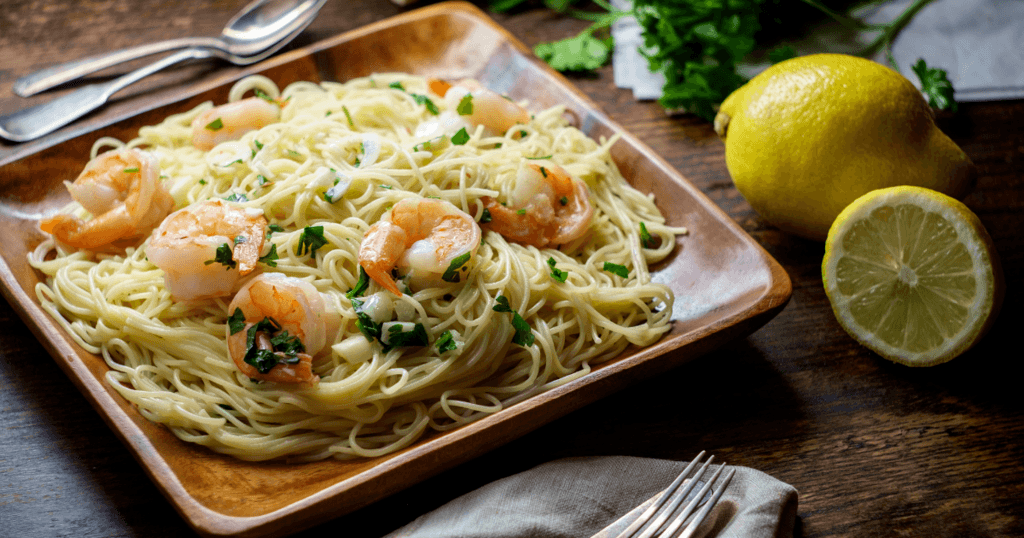
It’s also known as angel hair pasta or angel’s hair. It’s called that because the strands of pasta are very thin strands and very fine. With that in mind, you should also know that it cooks faster than the other types. Also, because each strand of pasta is thin, using chunky sauces with it is not recommended. It’s best used with cream or oil-based sauces.
Ditalini
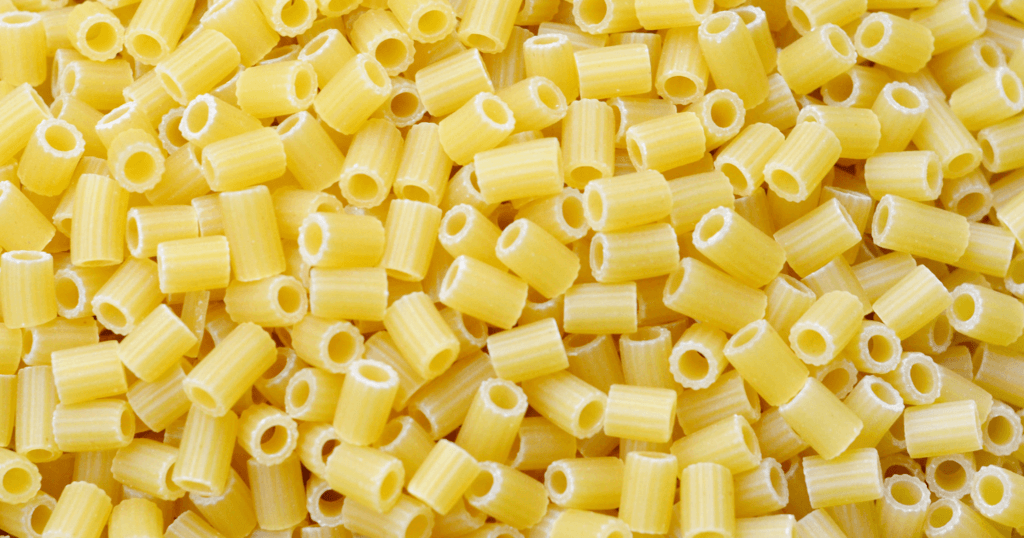
If there was a list of short pastas, this one would top it. According to Craftsy.com, ditalini is an Italian word that means “little thimbles”. Thimbles are what you wear on your finger while sewing so you don’t get pricked. Ditalini looks like that, except that there are two holes. They are very short tubes of pasta. Ditalini is great with sauces and is also used in tomato soups. We think they’d be a good version of mac and cheese too!
Elbow Macaroni
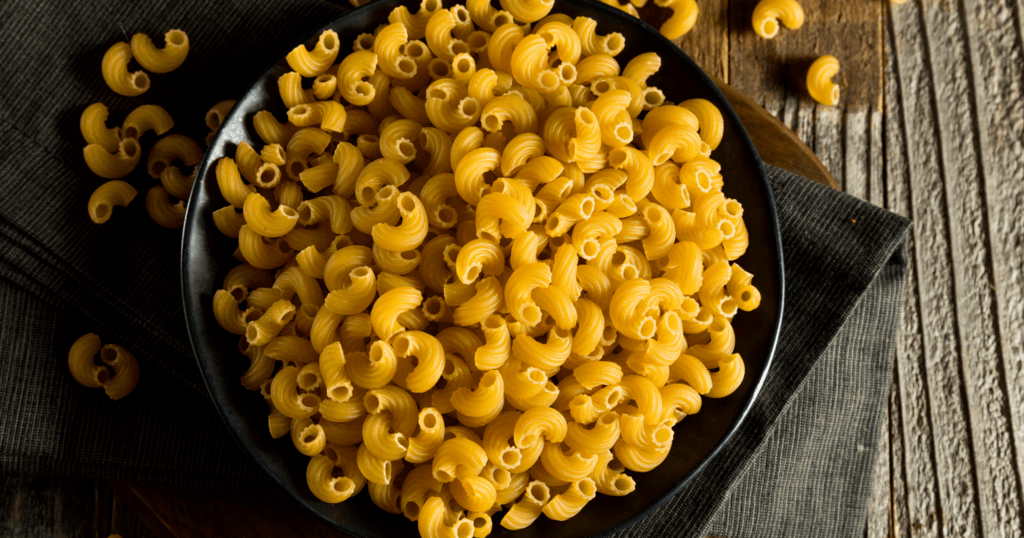
This is probably common to all of us, as aside from spaghetti, this was our introduction to kinds of pasta. Don’t they remind you of elbows? Elbow macaroni is also described as half-circular, C-shaped, or bent, tube-shaped, short pasta. Speaking of tubes, think of the sauces you use flowing into the tubes. The result is one flavorful dish! One recipe you can make with these is the staple macaroni and cheese. They’re excellent for baked dishes, soups, and pasta salads.
Different Kinds of Pasta Noodles – F
Farfalle (bow tie pasta)
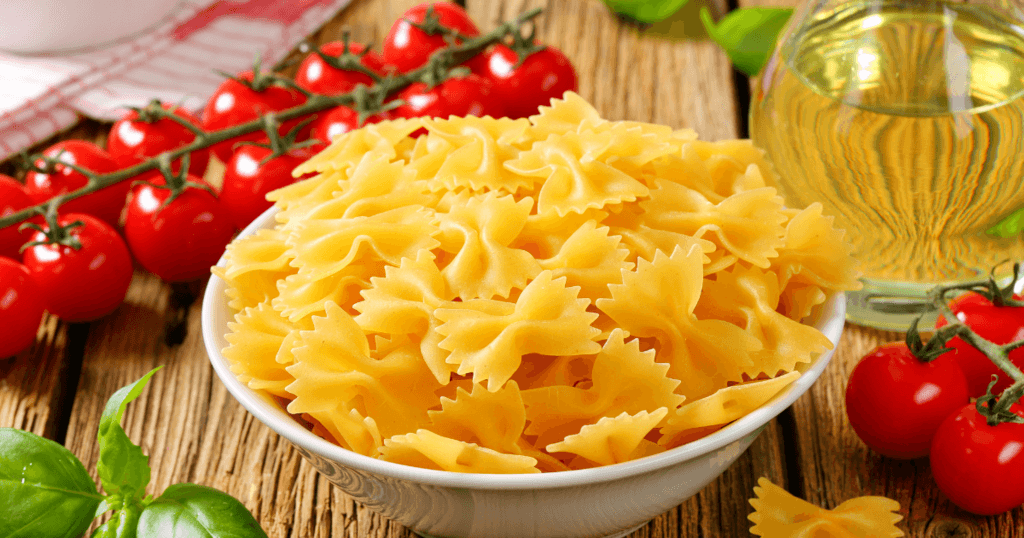
Yes, you’ve seen and read it right: bow-tie. And they do look like adorable bow ties, right? You can use them with creamy sauces, tomato sauces, and even olive oil. They are common in pasta salad recipes too! These guys are very versatile.
Fettuccine
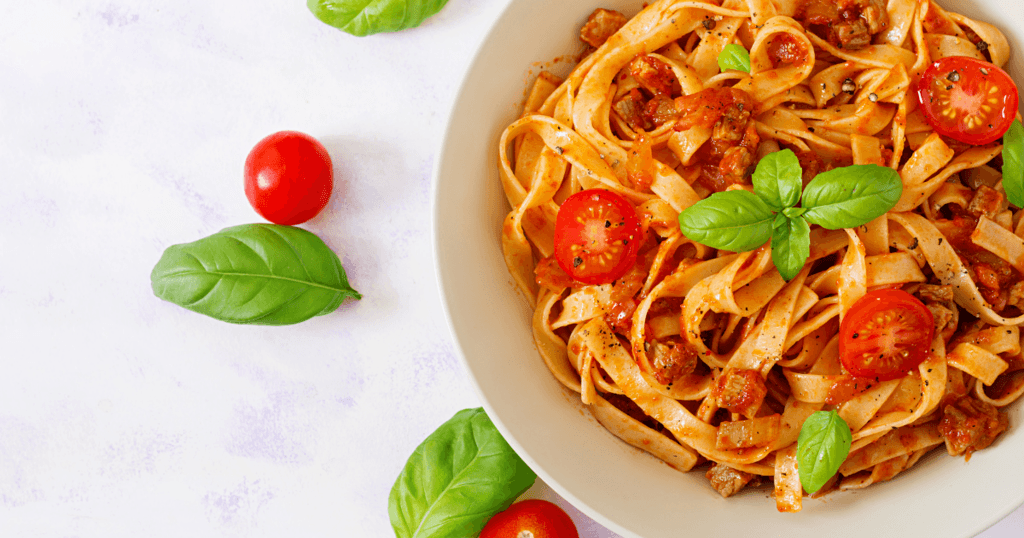
Jessica Gavin calls this pasta a flat spaghetti noodle. It’s slightly thicker and a more dense noodle than spaghetti, though. Because it’s wider, it goes well with thick meat sauces or chunks of meats, vegetables, or whatever is in the recipe. The most popular dish associated with this kind of pasta is the fettuccine alfredo.
Fusilli
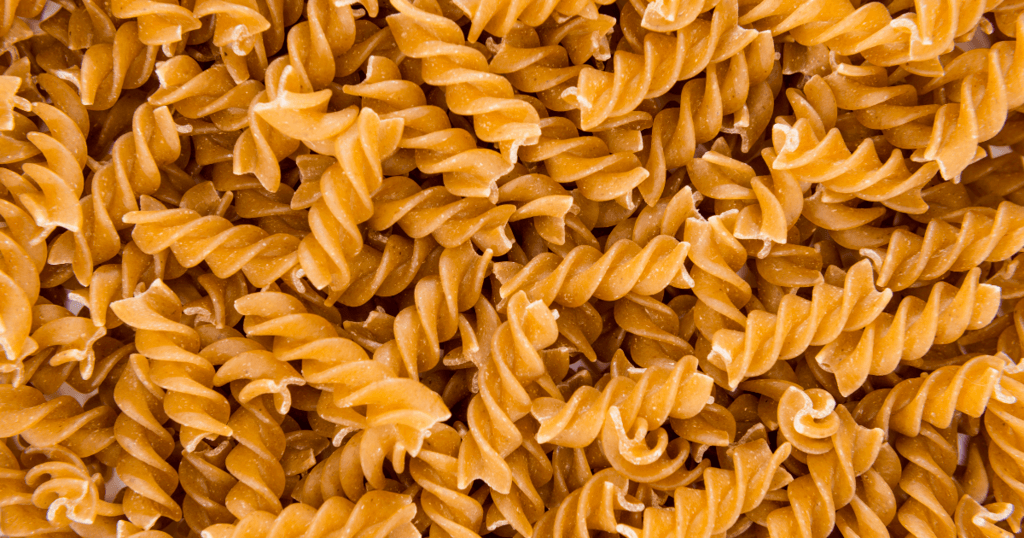
This is a spiral-shaped pasta. Like the elbow macaroni holes, the shape of this pasta is amazing for catching sauces and dressings. That means when you use fusilli, whether with sauce or in salads, you’ll get the full flavor of the dish. Also, out of the different shapes of pasta noodles, the fusilli’s shape is so unique! It’s definitely an eye-catcher.
Different Kinds of Pasta Noodles – L
Lasagna
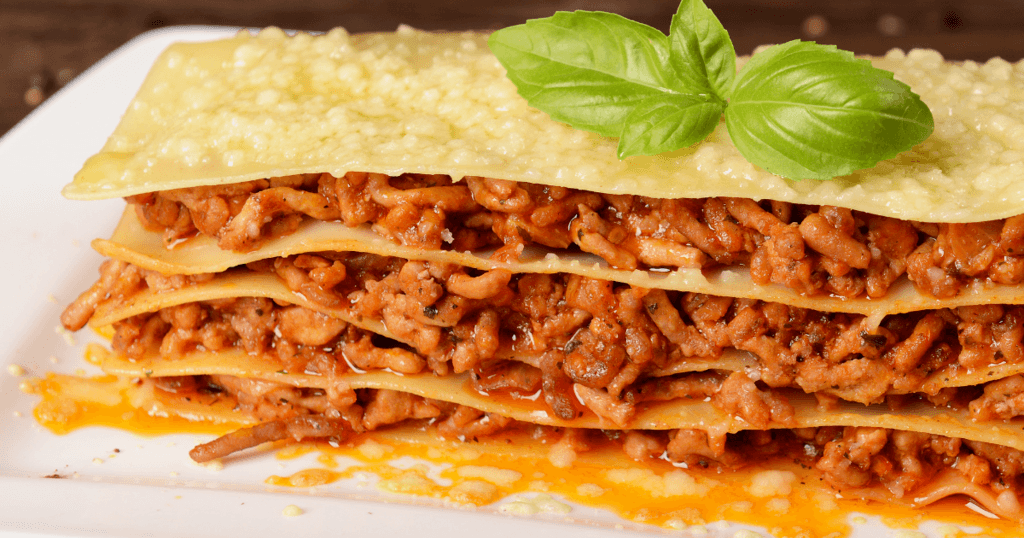
This is one of the oldest types of pasta in the world, according to Country Living. Lasagna is the term for the sheets of pasta that are easily identified by the ruffled edges. It’s also the name of the dish we’re sure we have all enjoyed as kids and the favorite of Garfield! Sandwiched between the sheets are tomato sauce, your meat/vegetable choice, and cheese. It’s delicious! You can also use lasagna in soups or roll-ups.
Linguine
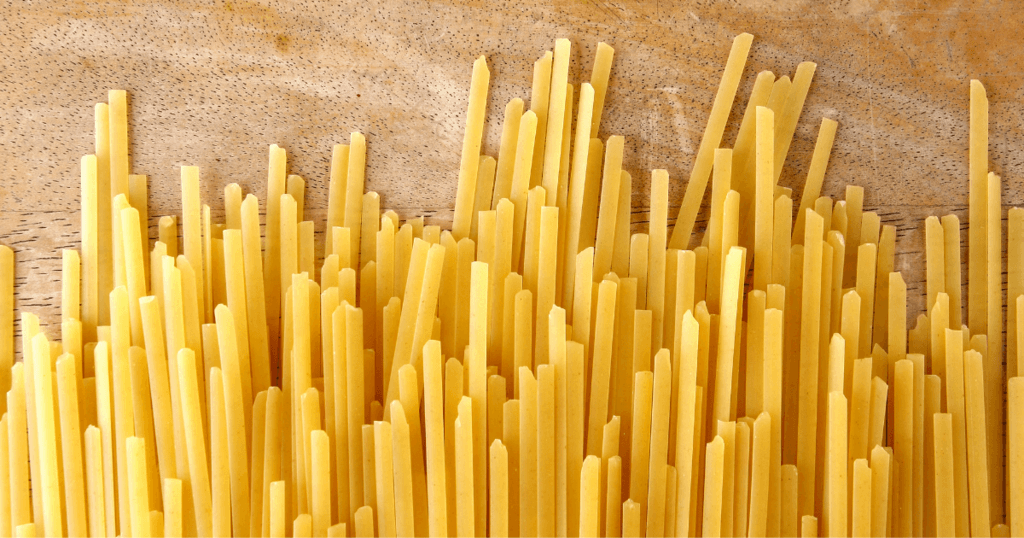
RealSimple.com says that linguine is an Italian word meaning “little tongues”. Linguine is like fettuccine – they also look like flattened spaghetti, but not as wide. These noodles are commonly used with clam sauce and pesto.
Different Kinds of Pasta Noodles – P
Pappardelle
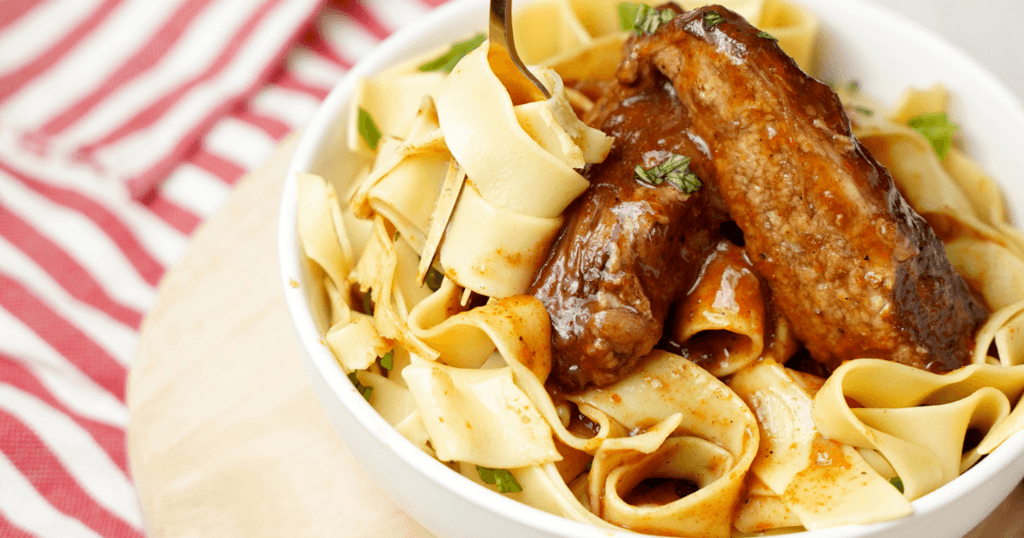
Pappardelle is flat like the fettuccine and linguine. This type of pasta noodles, however, is the widest among the three. Think of it as a workhorse pasta – it’s very sturdy! Feel free to throw hearty sauces at it; it will rise up to the challenge. Use this and you won’t be afraid of the sauce – whether meat or vegetable sauces – overpowering your pasta.
Penne
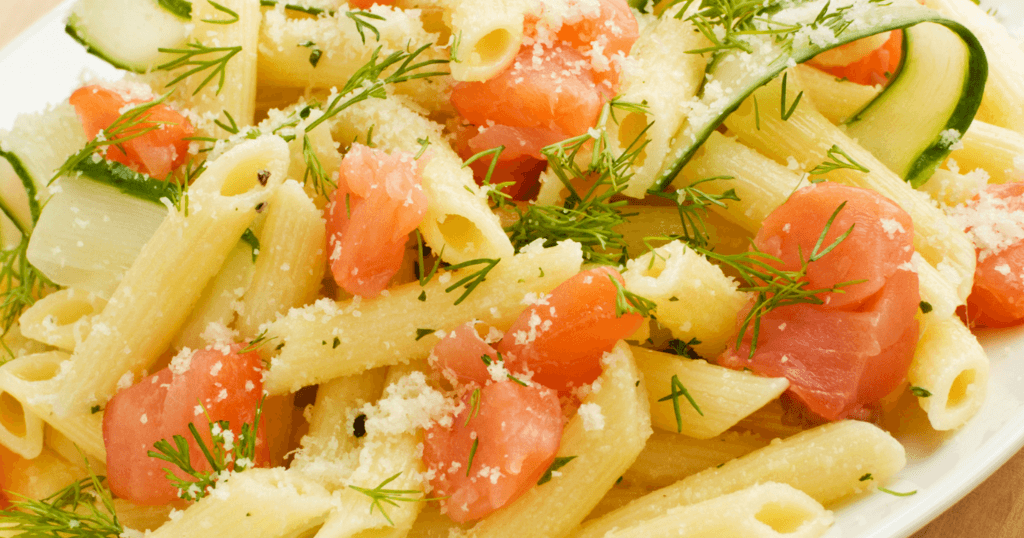
Penne is another kind of tube-shaped pastas. It’s hollow, cylindrical, and has slanted edges. The ridges on its body are for catching sauces. This pasta type is appropriate for all kinds of chunky sauces – the bits will slide into the holes and ridges.
Different Kinds of Pasta Noodles – R
Ravioli
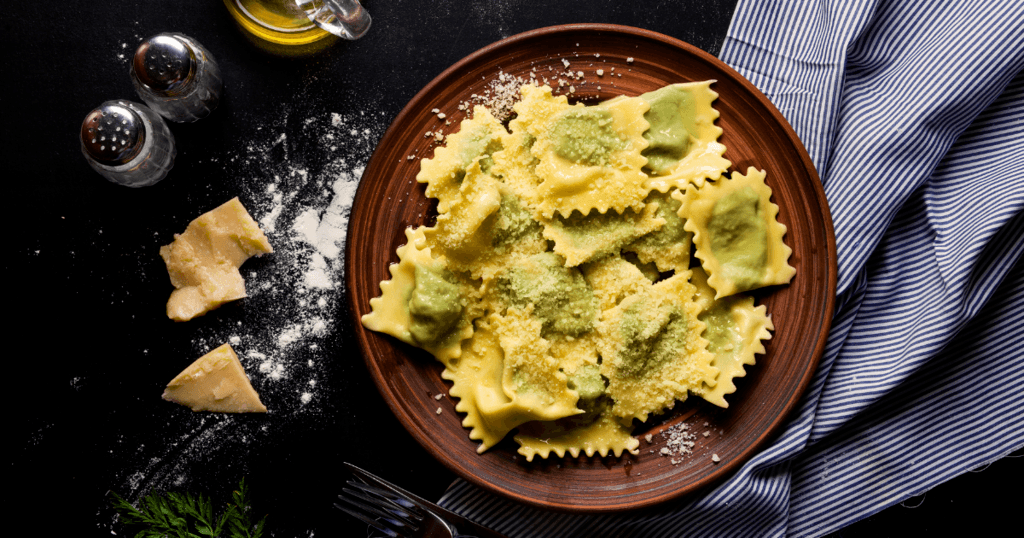
Ravioli is a square and stuffed pasta – made with egg-based pasta dough. You can say that they’re egg noodles, in a way. Just like lasagna, this noodle has a ruffled edge. You can also stuff them with whatever you feel like! Fill them in with cheese, meat, seafood, or vegetables. Serve it topped with sauce, in a soup, or with olive oil drizzle.
Rigatoni
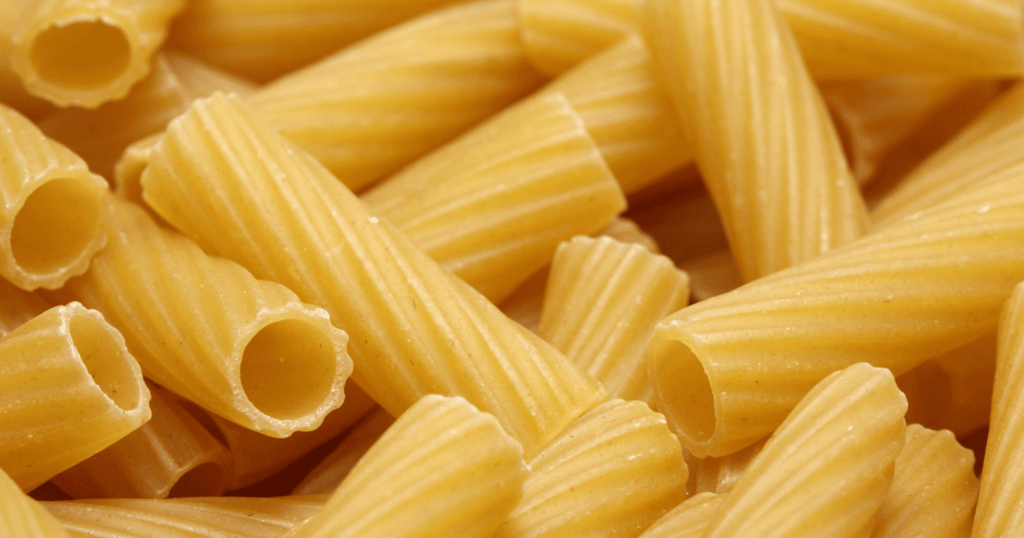
Rigatoni looks like penne, but it’s not the same. It’s also hollow and cylindrical and has ridges, but it does not have slanted edges. It’s also slightly fatter and larger. Use the same sauces you use with penne. You can also use them in salads and baked casseroles.
Rotini
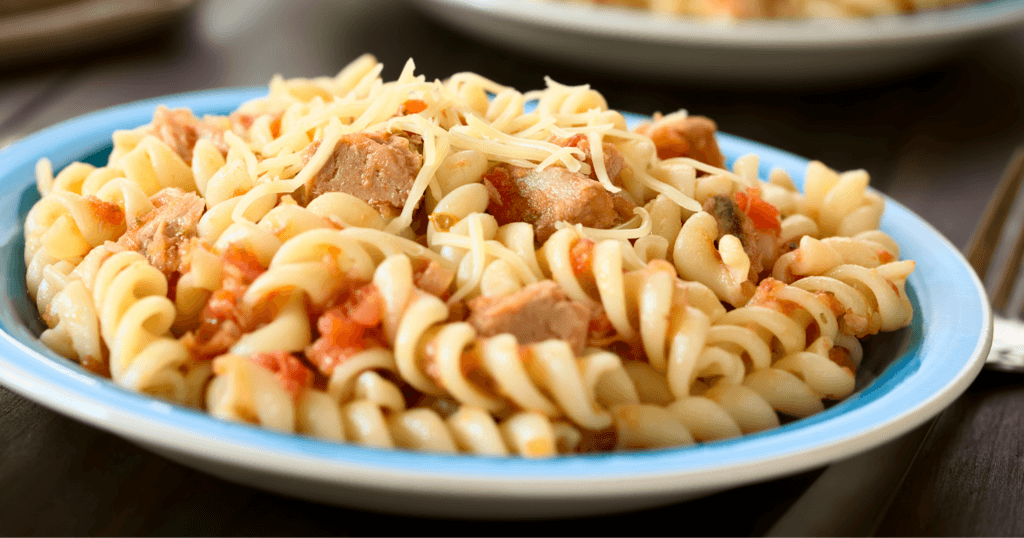
Rotini is a spiral-shaped pasta, like the fusilli. However, the spiral is slightly different – think more corkscrew in shape. It also has a tighter shape. But like the fusilli, use rotini with sauces that will go into the pasta shapes. Aside from pasta sauce recipes, you can also use these noodles in baked dishes.
Different Kinds of Pasta Noodles – S
Shells
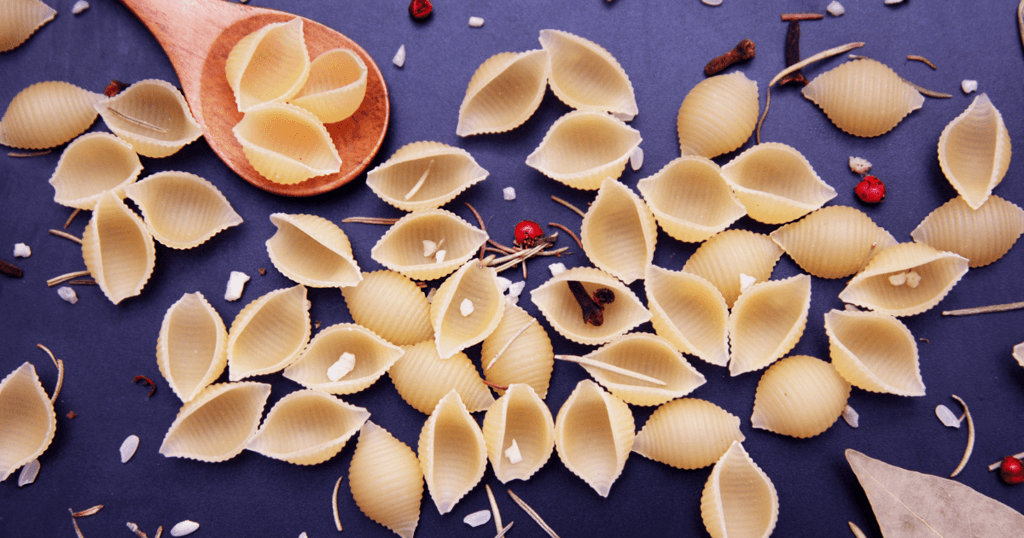
Shells are called shells because… this pasta type looks like shells. Go figure. There are actually different kinds and different sizes. Some have bigger openings, and some have smaller ones. You can serve them as stuffed shells in a casserole or just cook normally and then drizzle with sauce. Both are delicious options.
Spaghetti
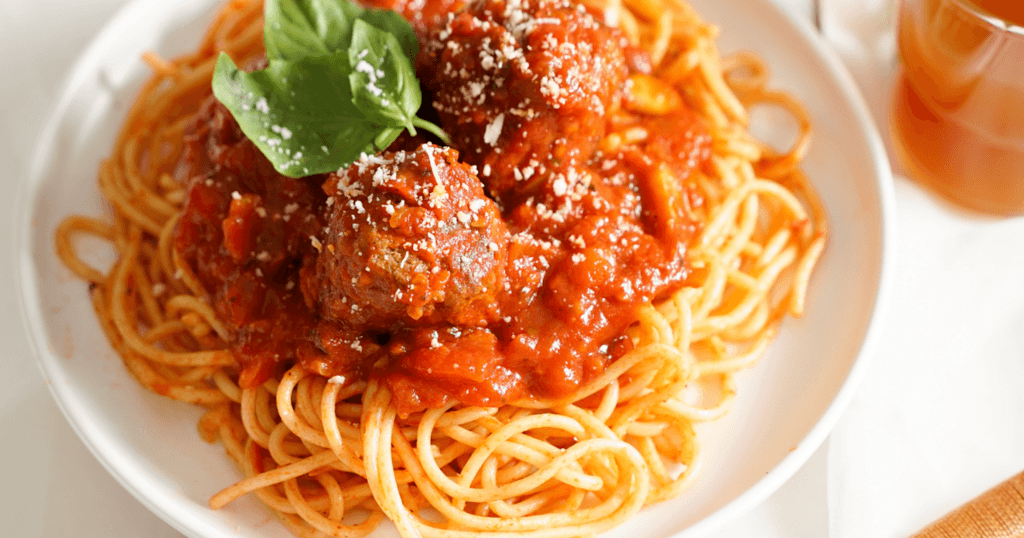
What is the most popular pasta, or what is the most popular type of pasta? We would definitely answer with spaghetti if asked. We’re pretty sure everyone we know has eaten this noodle. It’s already a staple in most of our fast-food restaurants. It’s also always present during children’s parties! Spaghetti and meatballs (use a chicken meatball if you prefer) is also a personal favorite of ours. To distinguish it from angel hair pasta, let’s just say spaghetti is thicker.
Ziti
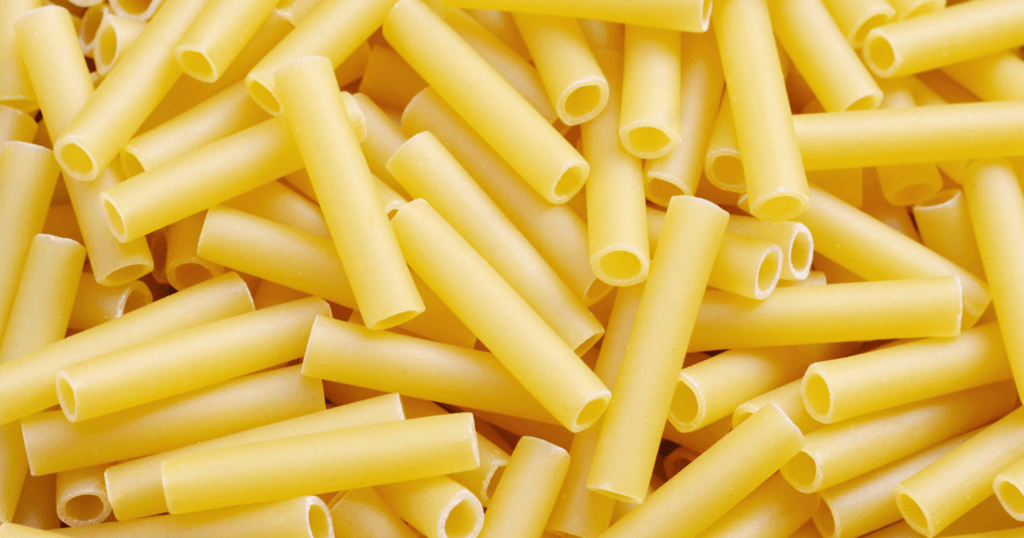
The tube shape of the ziti makes it look just like rigatoni. It’s also hollow and has straight edges. However, ziti also has a very smooth exterior and is smaller than rigatoni. You have to use sauces or toppings that are thick so they don’t slide off the smoothness of the ziti. Get your tomato sauce and cheese, and make baked ziti. You can also serve ziti with olive oil or fresh tomato.
Different type of noodles means different ways of cooking them
You’ve seen the different kinds of noodles for pasta. You’ve also seen how the shape, size, and texture of each noodle can affect the dish. They will all taste wonderful, but be careful about the sauce you use with each kind of pasta. Remember to use lighter oils or cream sauces when you’re working with thin noodles so that the noodles are not overwhelmed. The thicker noodles are more durable so you can use heartier, richer sauces. Chunkier sauces or sauces with meat or vegetable bits are also perfect for noodles with textures. Experiment with different noodles, sauces, oils, salad recipes, and see which ones work together and which don’t.
What are the different types of pasta that should be tried?
Like we mentioned above, the list doesn’t include all types of pasta noodles. These are just the ones that we have encountered. So there are many more kinds of pasta noodles that should be listed and tried. In fact, if you get the chance, try out all the kinds you encounter!
And here’s one that you should definitely try: our latest class offering, Chef Miguel and Angel Prats’ Braised Beef with Pappardelle Pasta! Check out the video below to know more.
Learn their special recipe, as well as some kitchen tips. Make tender, slow-braised chunks of beef marinated in a delectable red wine sauce. After that, place the chunks on a bed of pappardelle pasta, mix it all together and take a bite. It’s going to be so delicious, you’ll forget you even asked questions like “what are the different types of noodles?” It’s a pasta dish unlike any other, guaranteed! It’s going to be great for your online cooking business. Customers will be lining up for more!
And if you enroll now, you’ll get the intro price of only Php799! It’s up to July 6, 2021 (11:59pm PH TIME) only… so what are you waiting for? There might not be another opportunity for this. Click here to enroll in our Braised Beef with Pappardelle Pasta class now!
]]>
 다들 즐거운 주말 보내요ฅ^•ﻌ•^ฅ
다들 즐거운 주말 보내요ฅ^•ﻌ•^ฅ  스테파니킴치 –
스테파니킴치 –